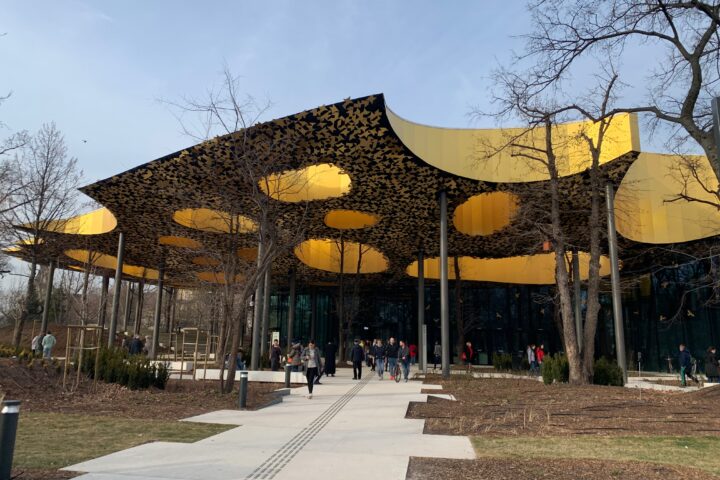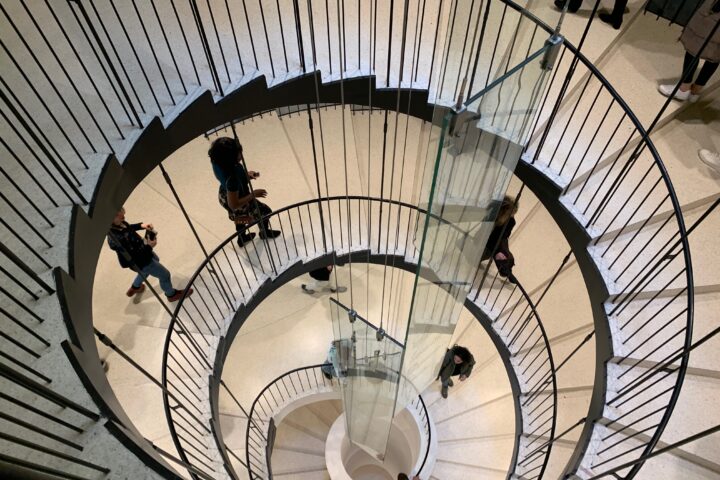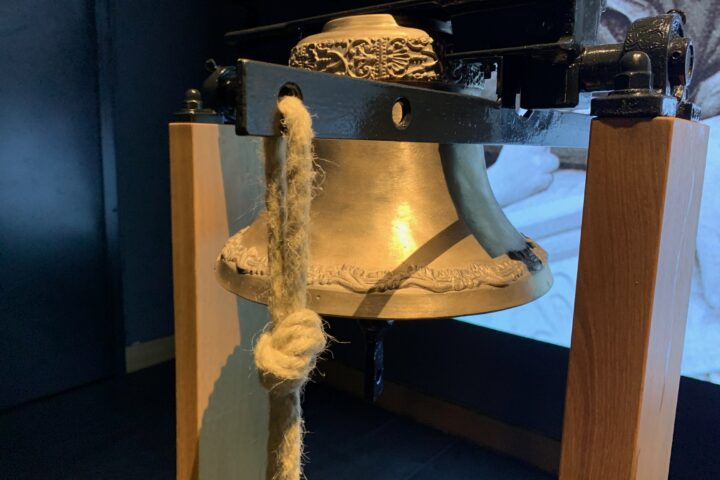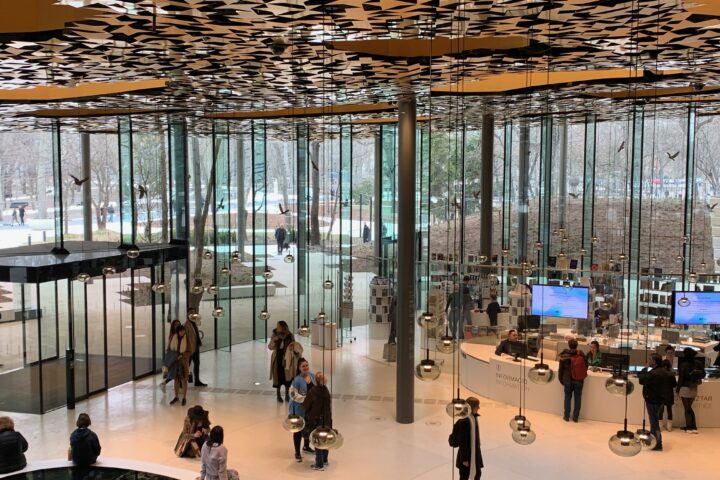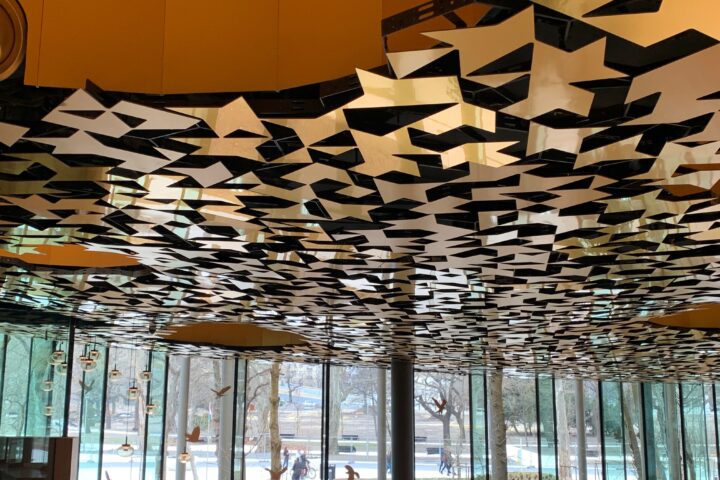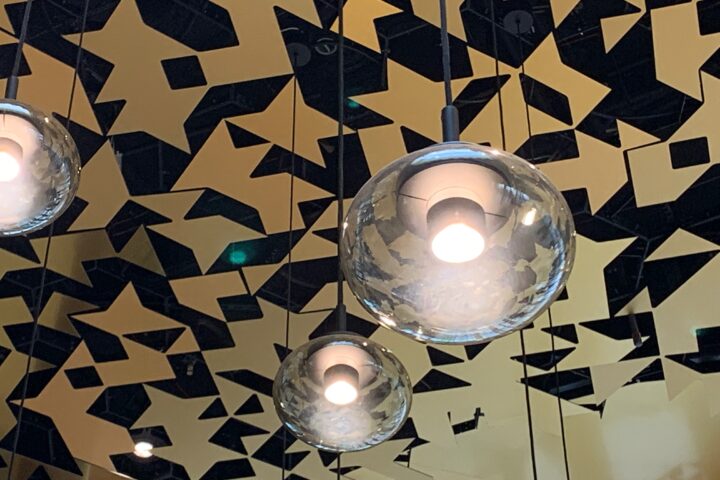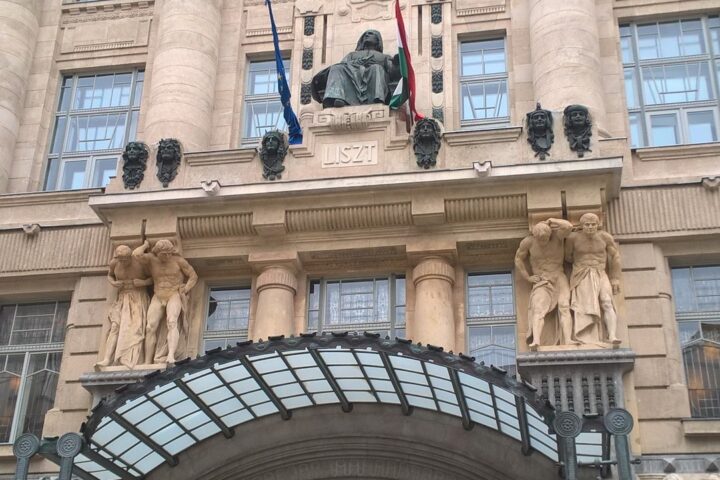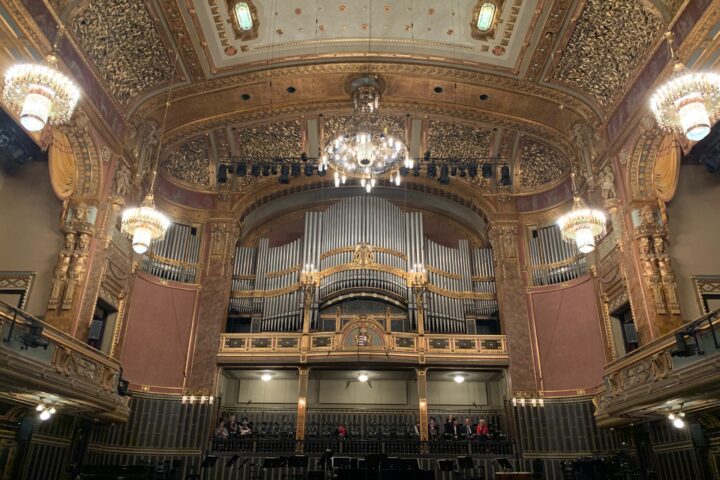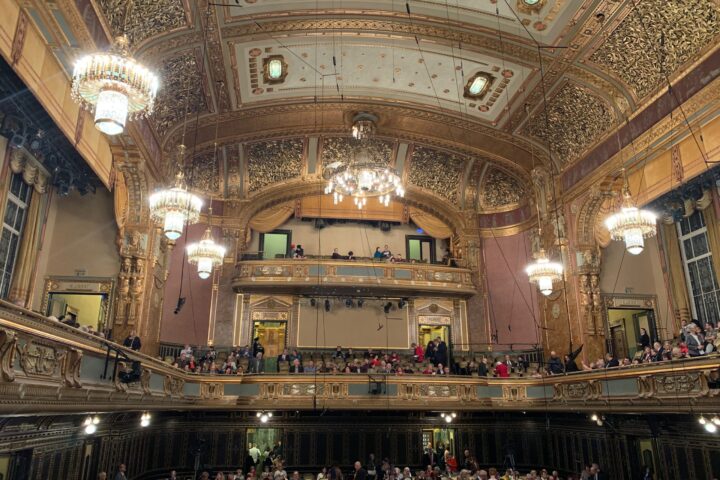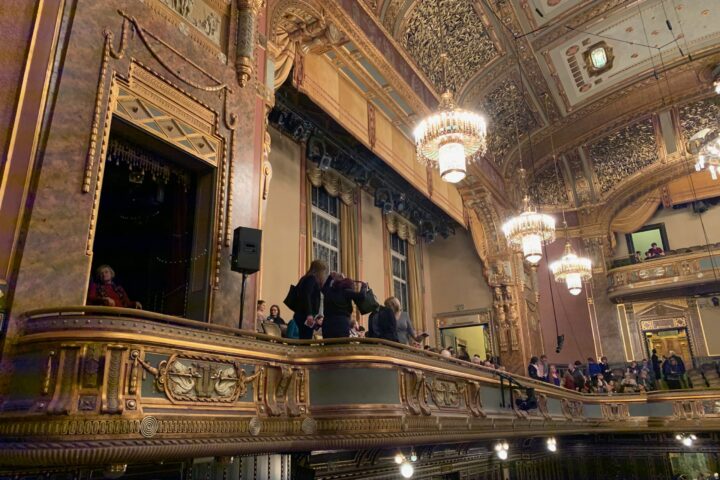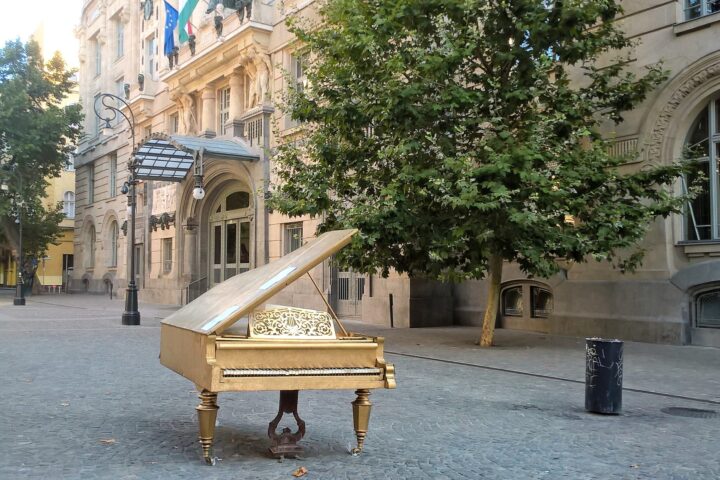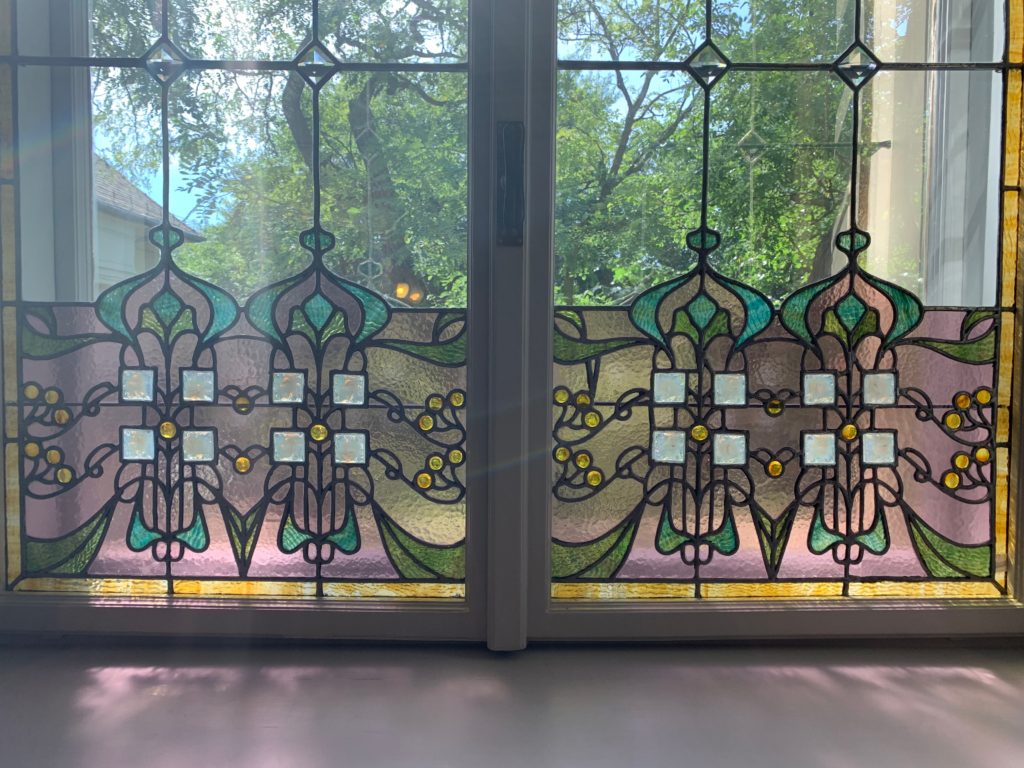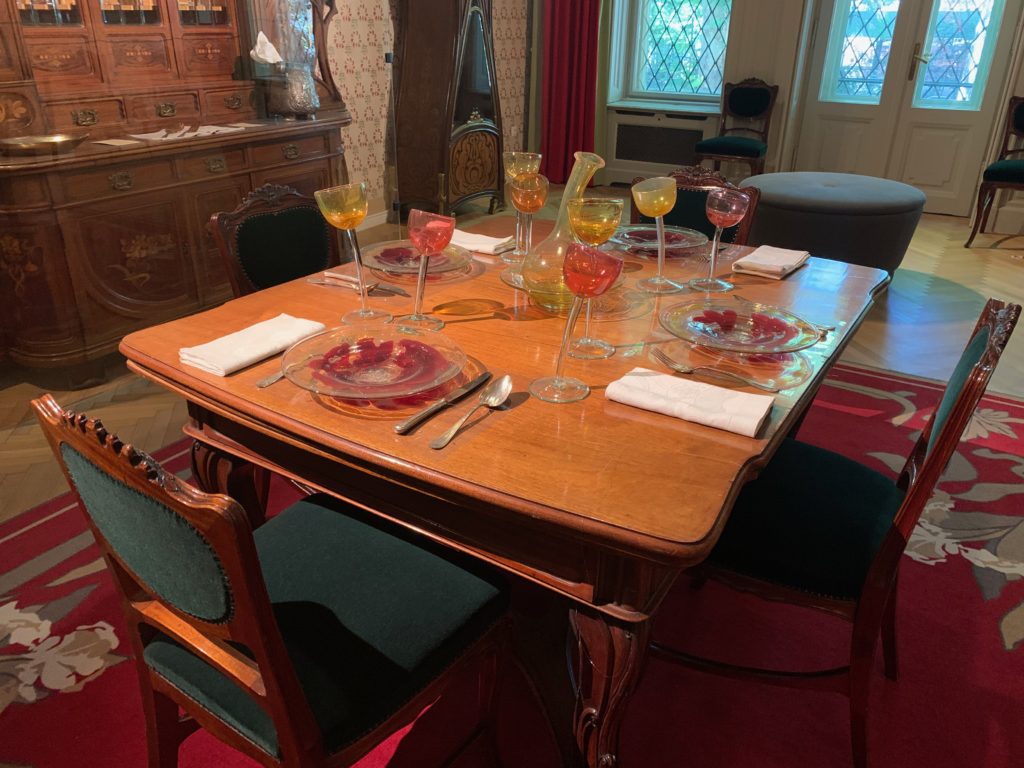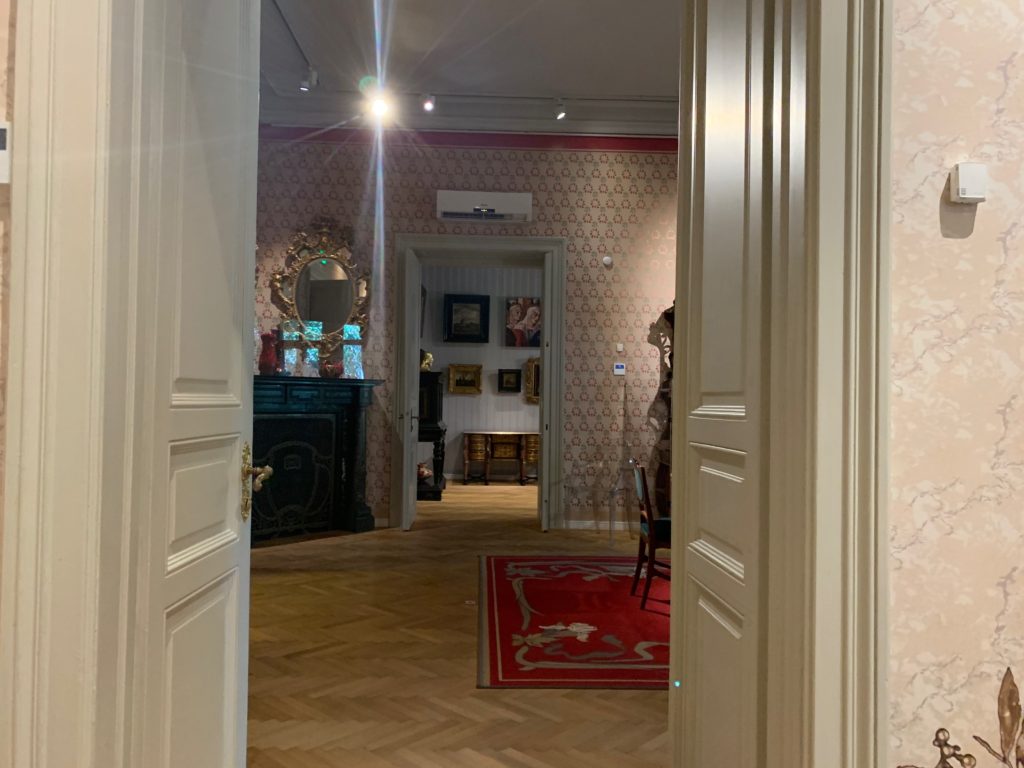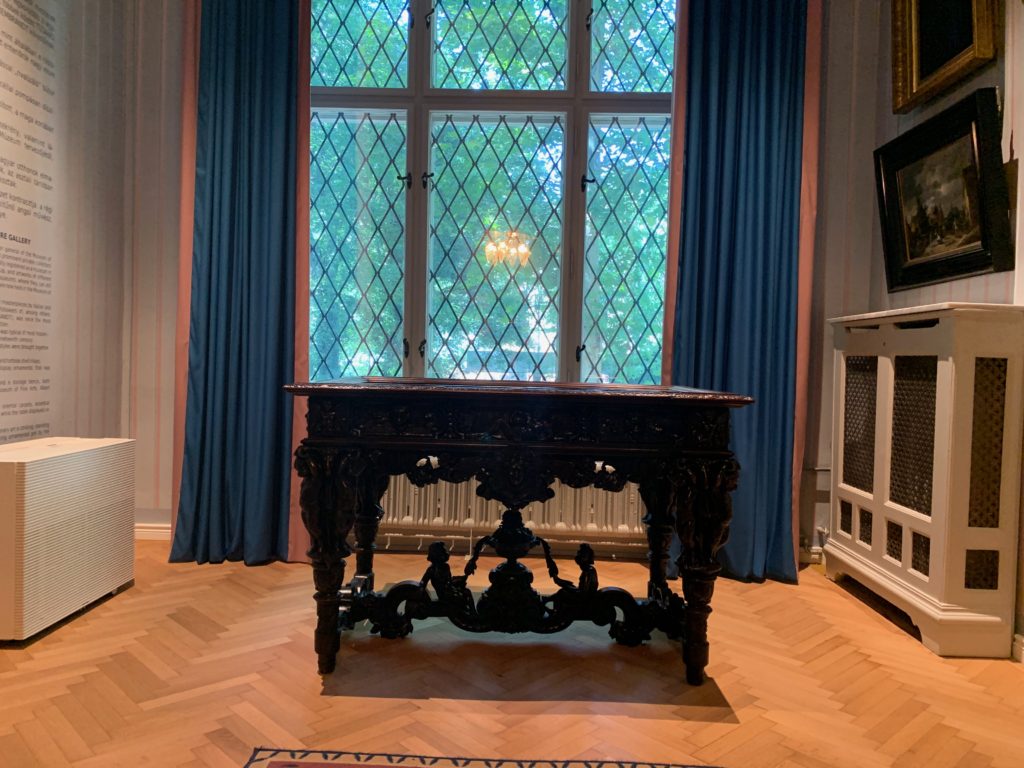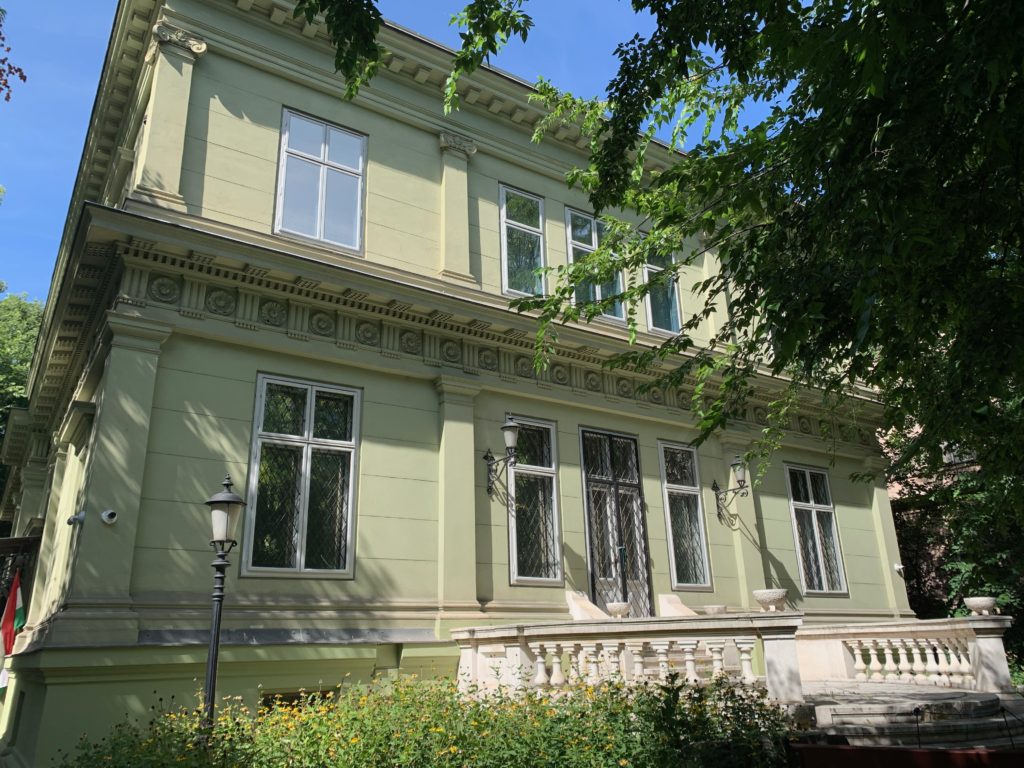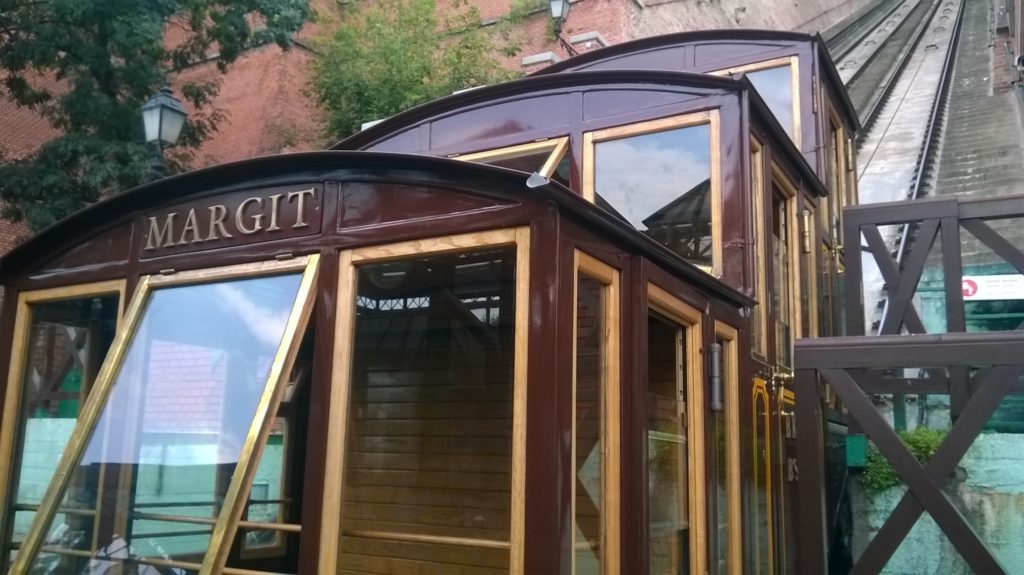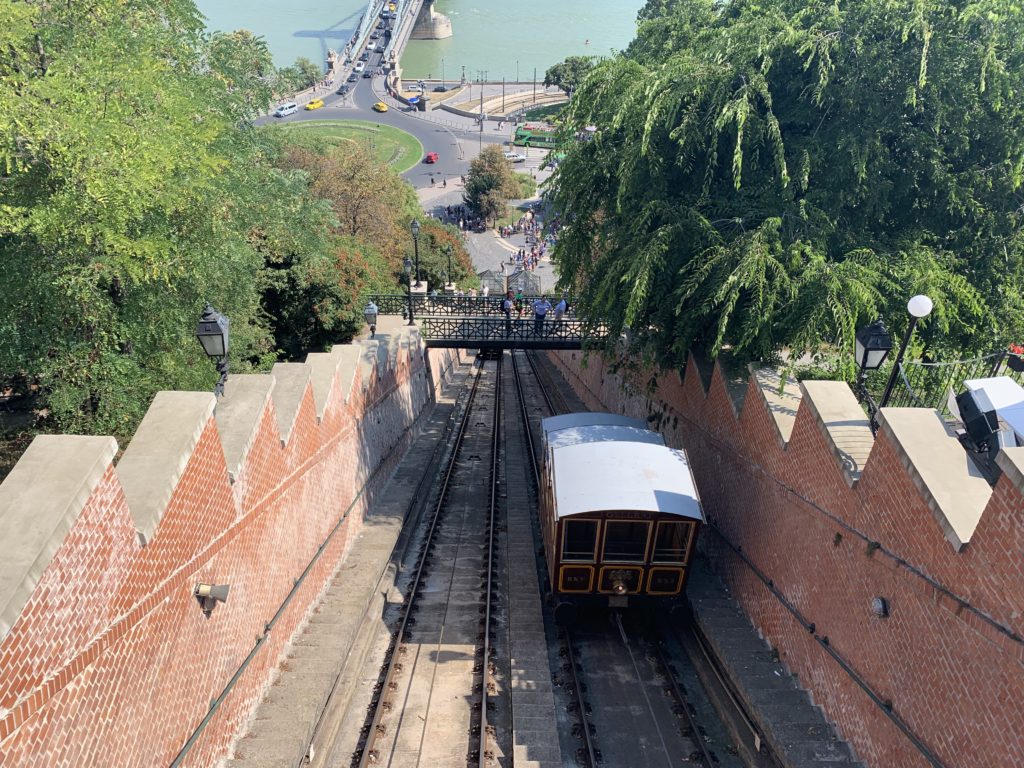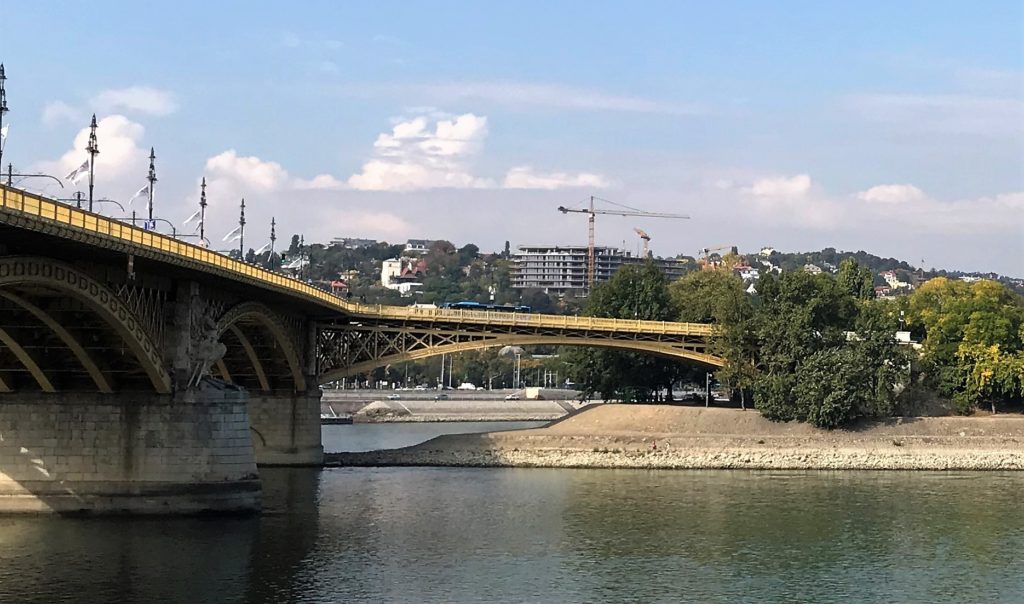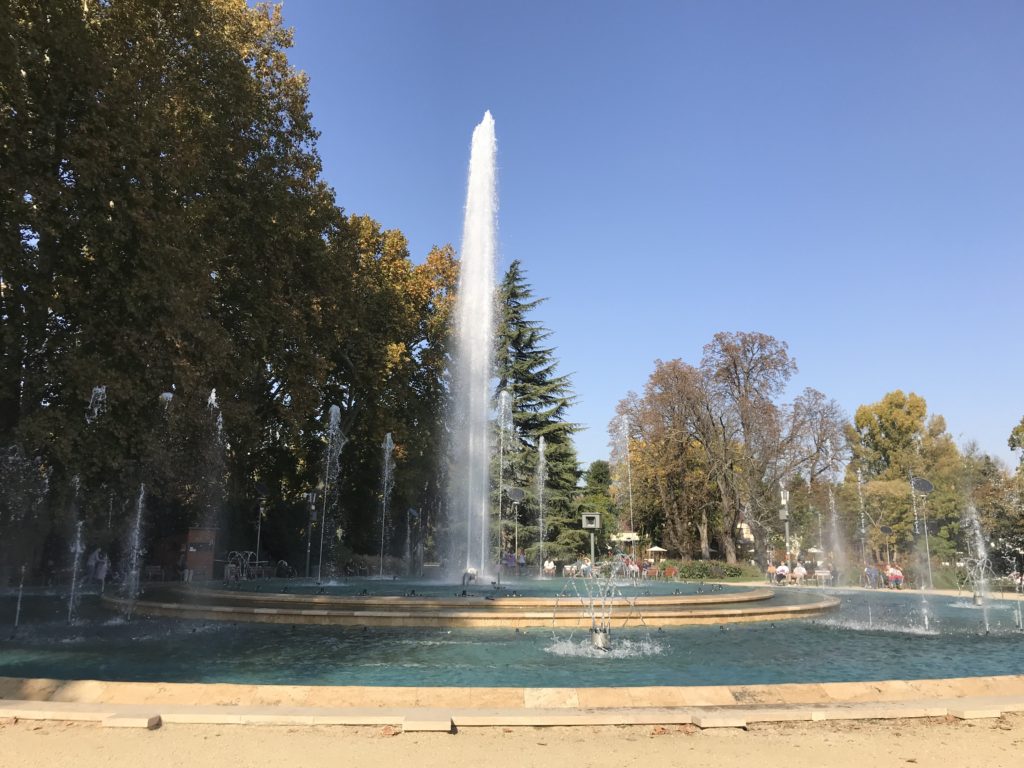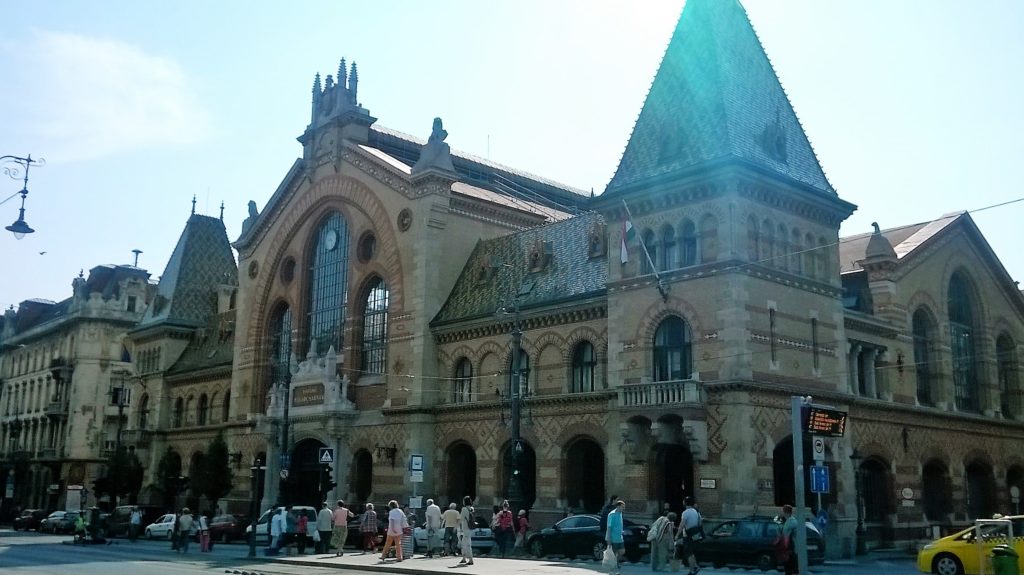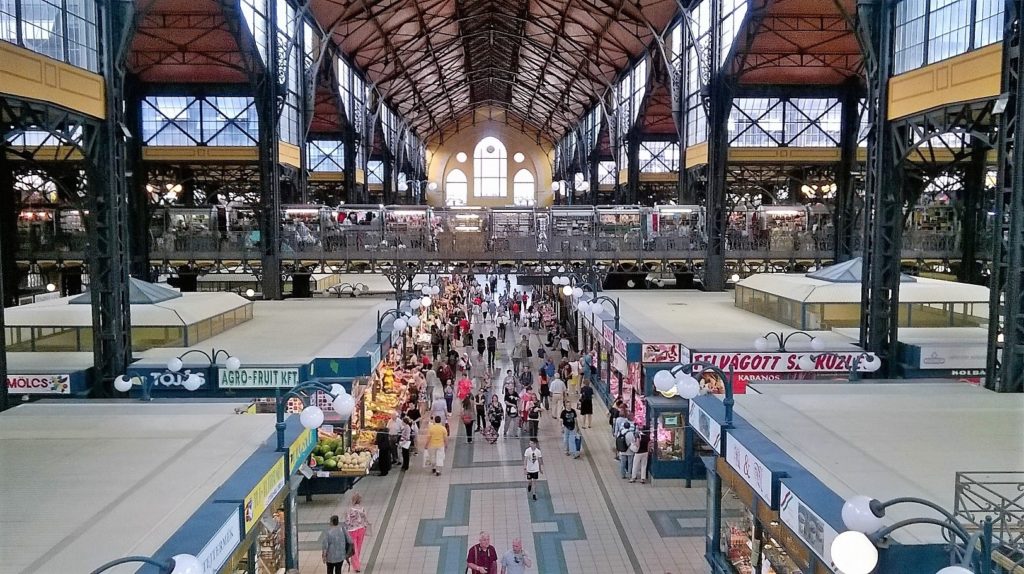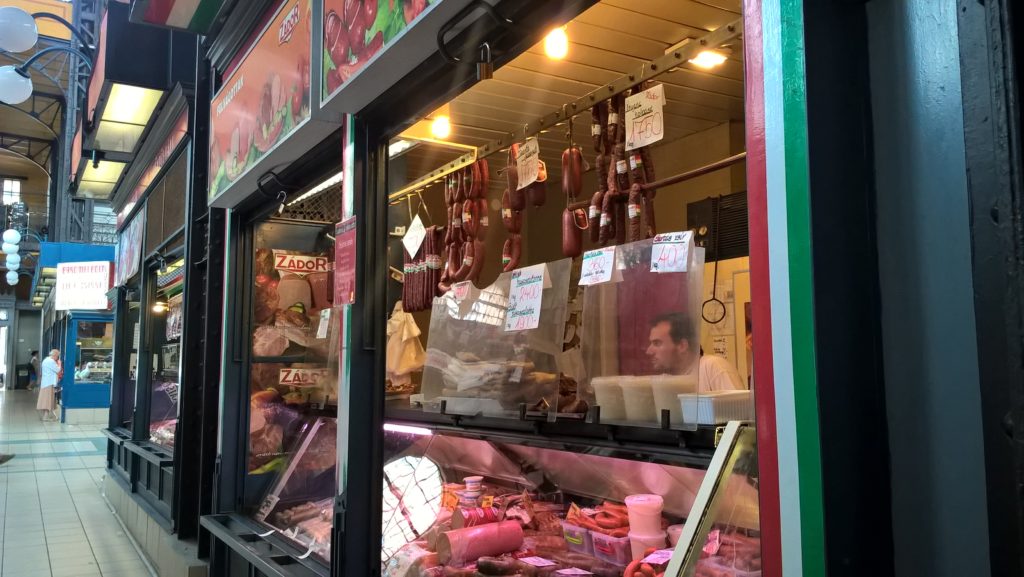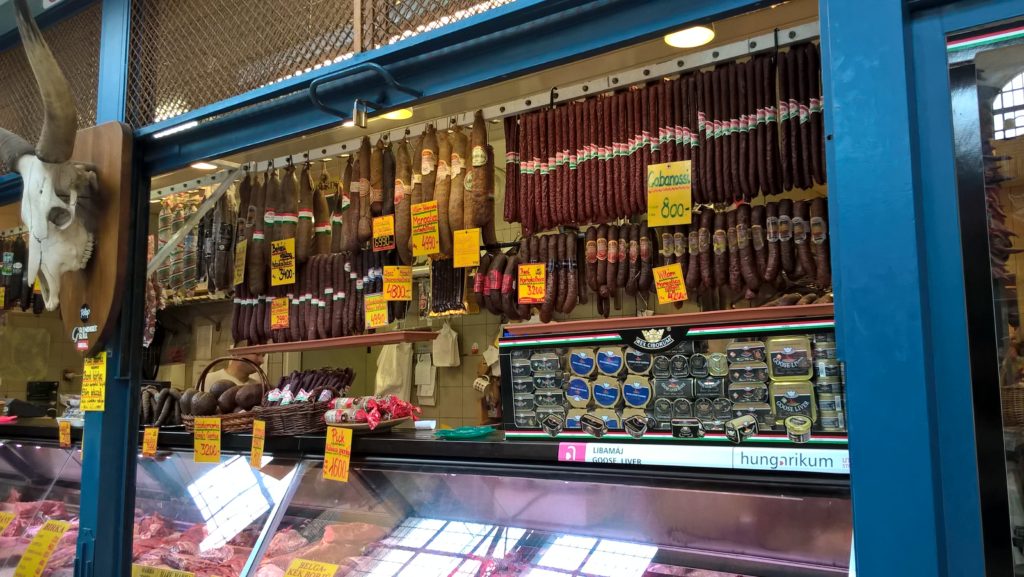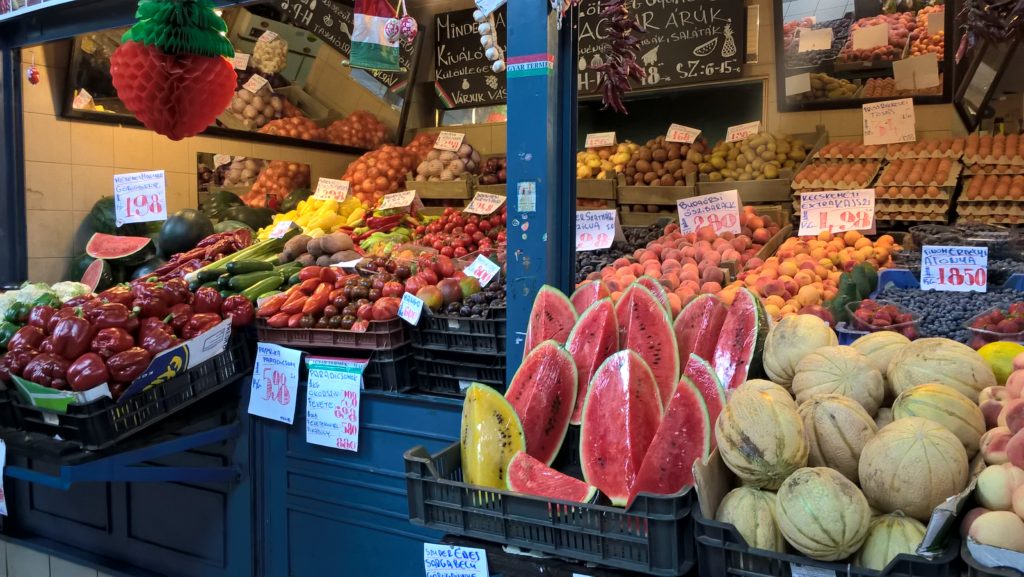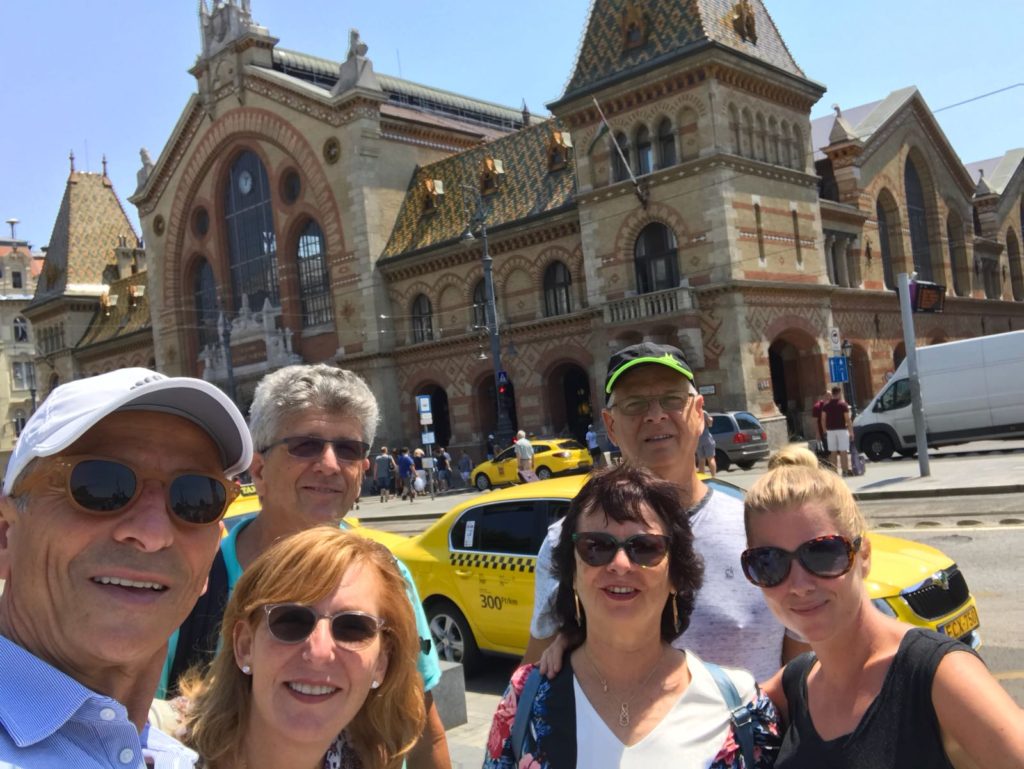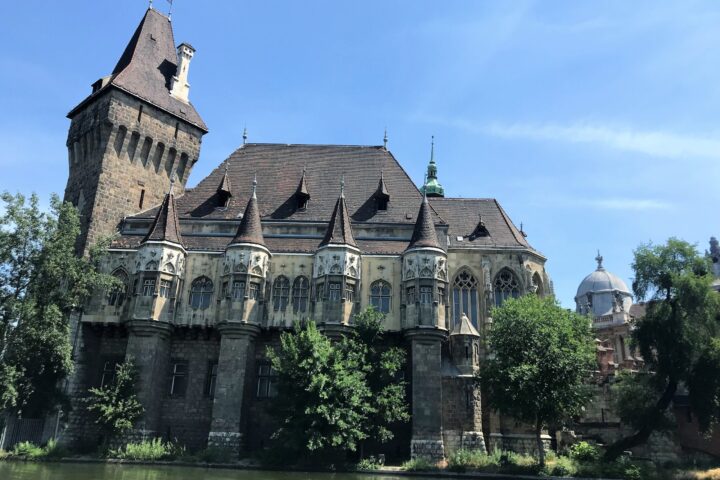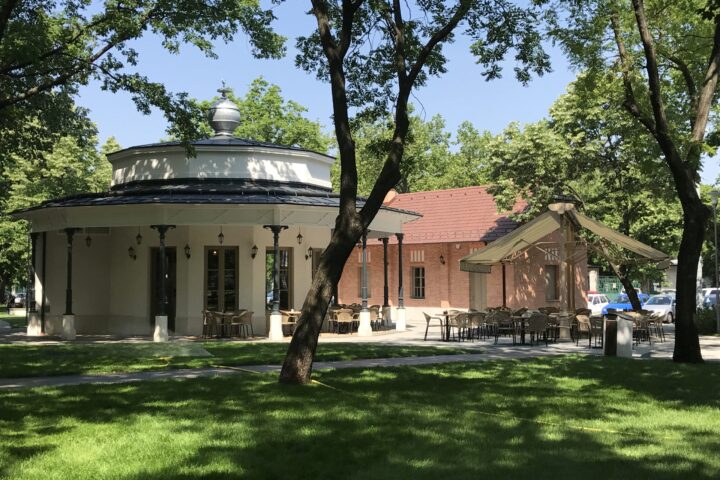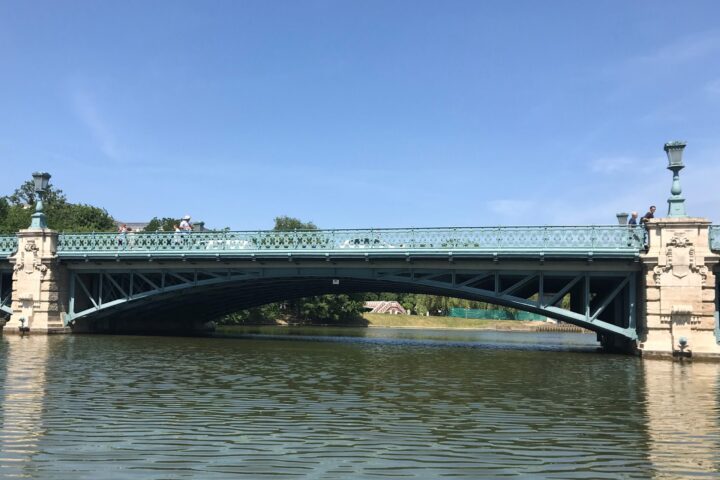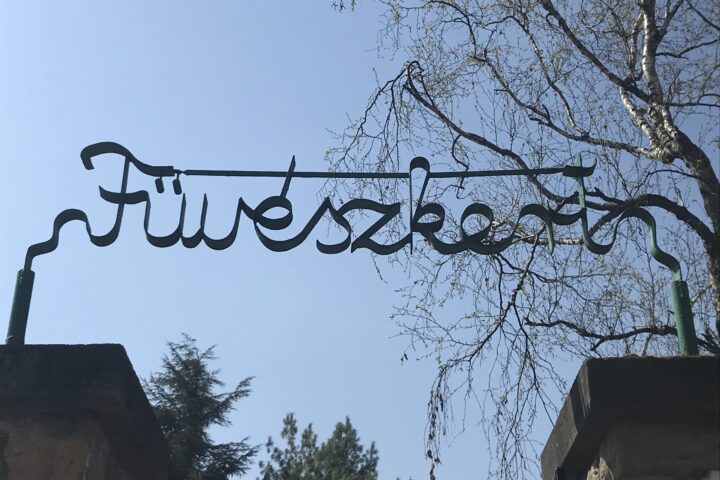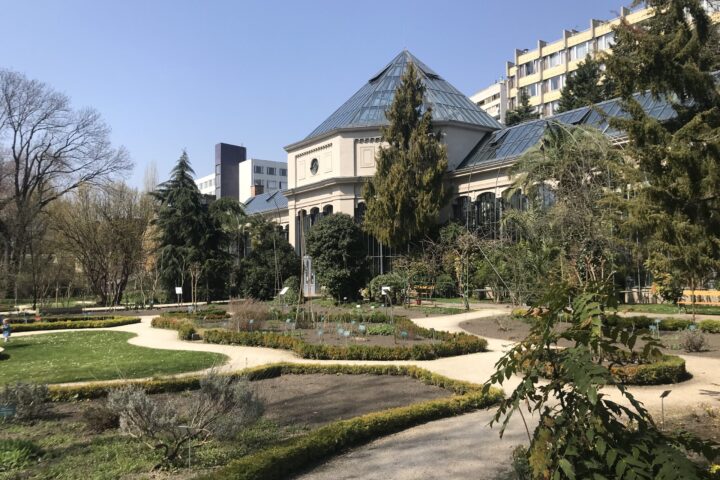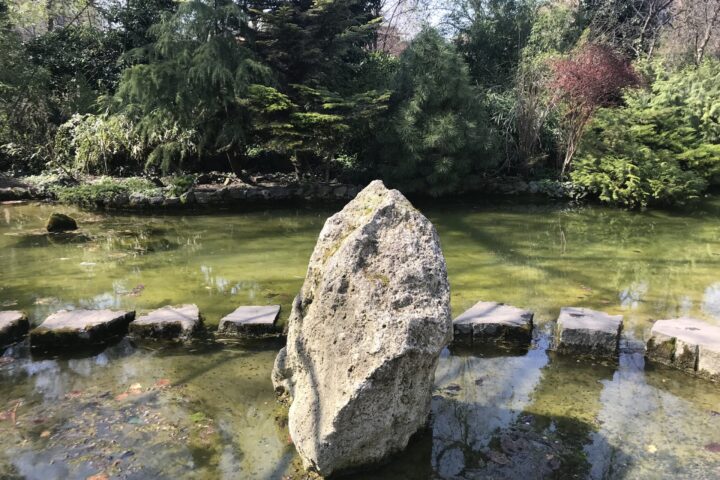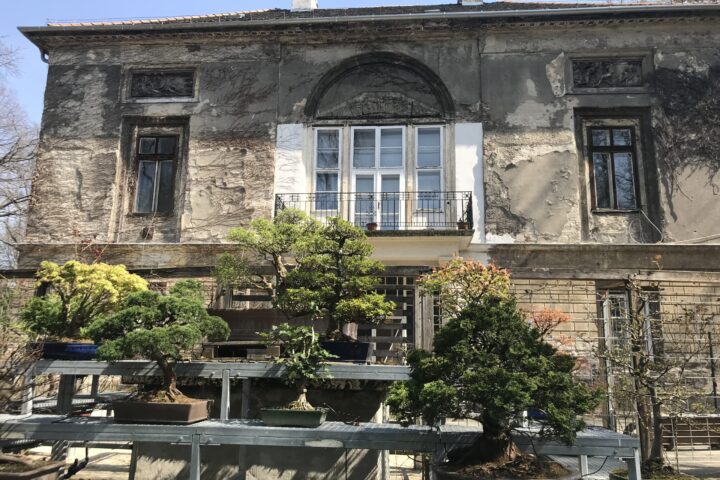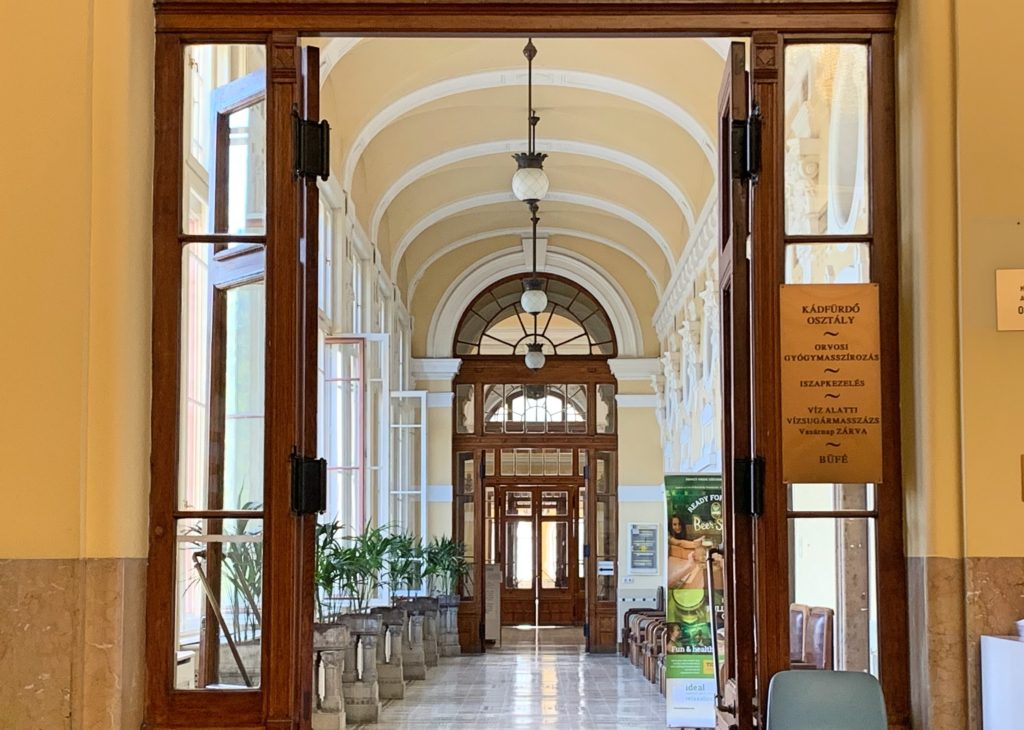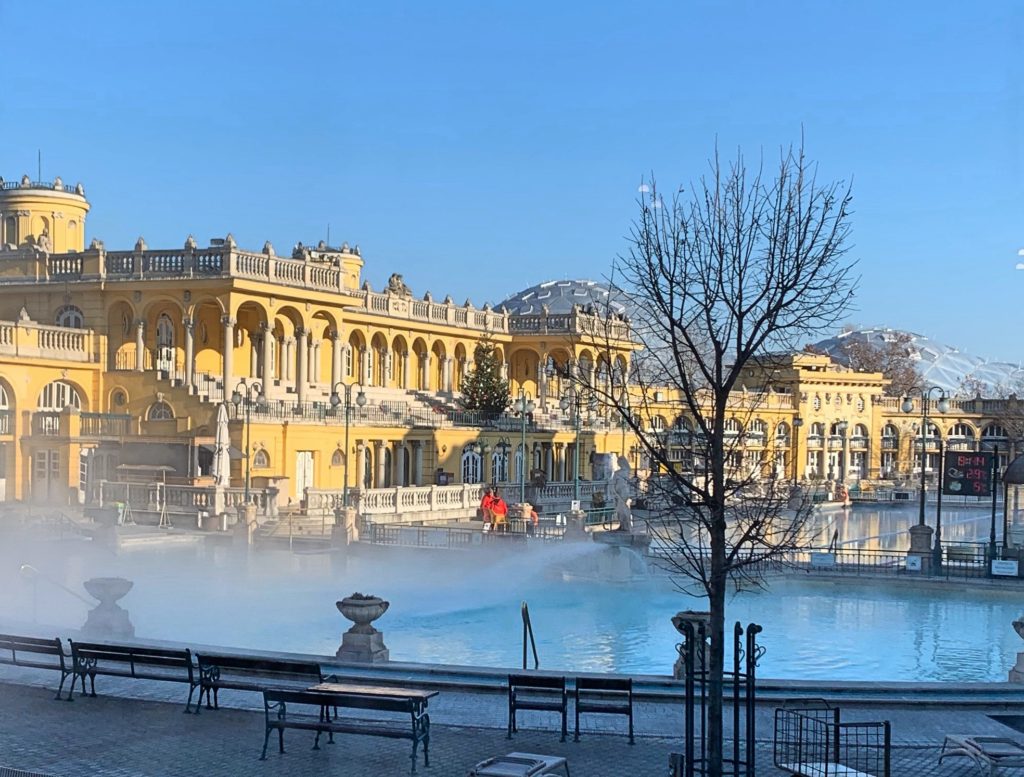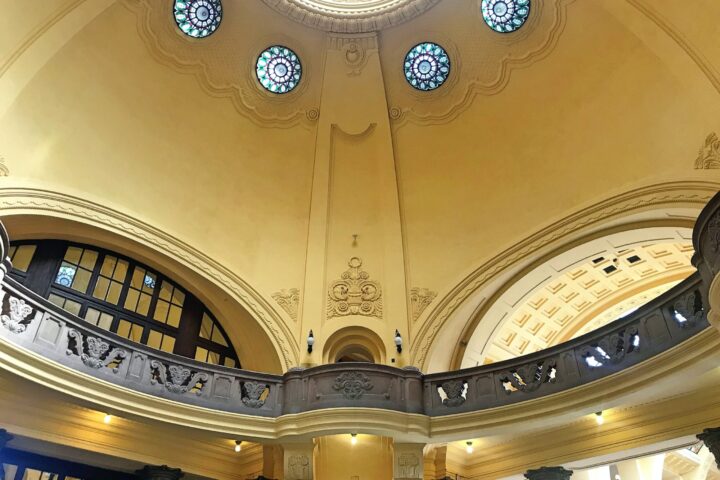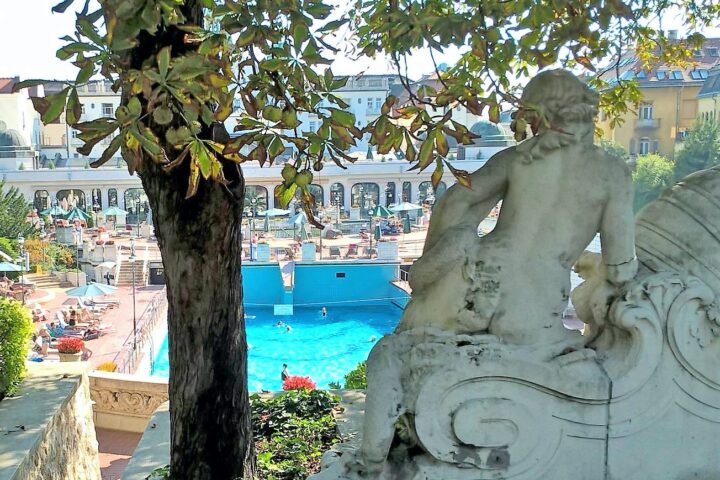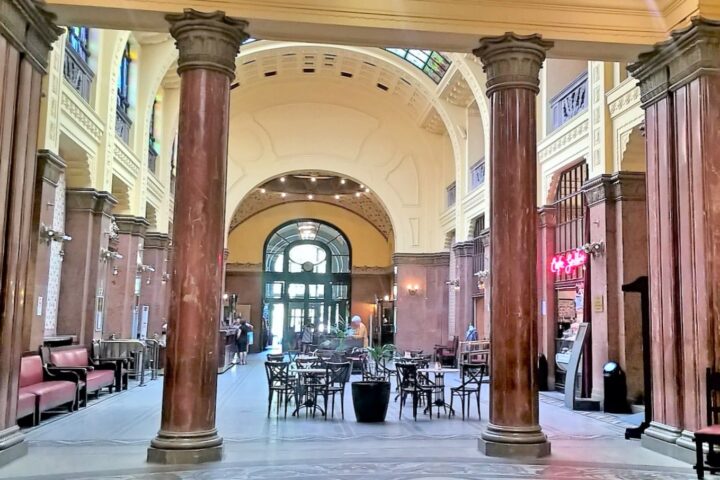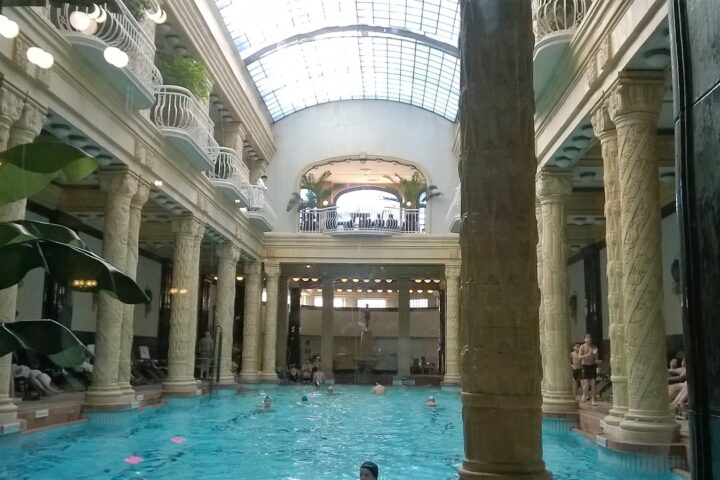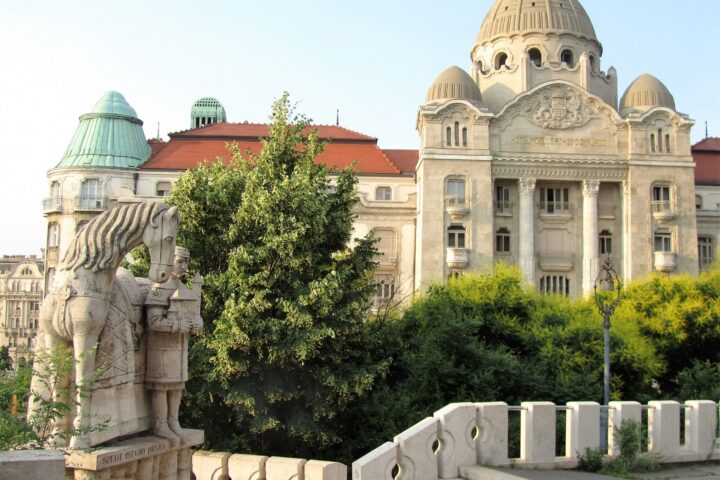A new museum opened in the City Park of Budapest, the museum of Hungarian Music. We had a private tour in the museum last week and were truly impressed by both the design of the building and the museum’s programmes and exhibitions.
The building was designed by Japanese architect Sou Fujimoto, to me it looks like an extremely ornate spaceship abandoned in the woods. For example I love the 12m high glass windows and panels and the hundreds of golden stylised leaves decorating both the interior and the outside. As a result it looks like a huge forest of gold, which is even more beautiful in the sunshine when the lights are nicely reflected on each and every gold leaf.
In the sound dome you can enjoy a unique audio-visual experience with sounds and music coming from all directions. I loved when all the sounds and music came together by the end of the show. It really felt like as if we witnessed a special chemistry experience in a musical laboratory. As an addition the permanent exhibition offers a musical journey in space and time. You must take some time to explore it, because you can easily spend hours in this underground musical maze. Music lovers should plan to spend some 2-3 hours in the building. Visitors can expect to get a better understanding of Hungarian music from the different periods of our musical history.
(On a personal note I have to add that I’m very much against all new constructions in the second largest public park of Budapest. The reason is that I think we should preserve and enlarge the green spaces in the city. However, I like the modern approach and the fact that the building is supposed to use sustainable and climate-friendly solutions.)
